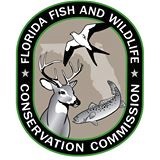 The Florida Fish and Wildlife Conservation Commission (FWC) is initiating a statewide effort to conserve Florida’s most vulnerable wildlife. Staff are working to compile a package of potential new Critical Wildlife Areas for discussion at the June Commission meeting.
The Florida Fish and Wildlife Conservation Commission (FWC) is initiating a statewide effort to conserve Florida’s most vulnerable wildlife. Staff are working to compile a package of potential new Critical Wildlife Areas for discussion at the June Commission meeting.
CWAs are established by the FWC under a Florida Administrative Code rule to protect important wildlife concentrations from human disturbance during critical periods of their life cycles, such as breeding, feeding or migration.
Disturbance is a primary factor affecting bird nest productivity. When adults are disturbed, they fly from their nests, leaving eggs or young birds exposed to heat and predation. Human disturbance can cause wildlife to abandon high-quality habitat that is necessary for their survival.
“CWAs are a great conservation tool that seem to have gone into hibernation for some time. Up until we approved Bird Island in 2014 there had not been a CWA created in Florida in 21 years,” said Commission Chairman Brian Yablonski. “The idea is to bring forward areas we already know are significant rookeries susceptible to human disturbances and then develop proposals to move forward to establish CWAs in the coming year. This is our Theodore Roosevelt moment. It’s a chance to do something big for conservation.”
Typically CWAs are small in acreage but great in their importance to wildlife. They are only established with concurrence from the land owner; and many are owned by the State of Florida. Currently, there are 20 CWAs throughout Florida, which are managed for shorebirds, wading birds, bats and gopher tortoises.
“We have a responsibility to protect wildlife when they are most vulnerable, especially Florida’s iconic bird species,” said Yablonski. “The conservation movement got its start in Florida over 100 years ago protecting our native bird populations.”
“Creating new CWAs is one of the best things we can do to protect Florida’s most vulnerable native species,” said Eric Draper, Executive Director of Audubon Florida. “The FWC deserves to be proud of the tremendous difference that these designations will make.”
At its April meeting, the Commission received an update about a Martin County Critical Wildlife Area known locally as Bird Island. The 2-acre spoil island is an important rookery for at least 17 bird species, eight of which are state or federally listed as species of special concern or threatened.
FWC staff reported a promising increase in the number of chicks and juvenile birds on the island in the past year. This is likely due to the decrease in human disturbance as a result of the island being designated a CWA in September of 2014.
For more on Critical Wildlife Areas, go to MyFWC.com/Conservation, click on “Terrestrial Programs” then “Critical Wildlife Areas.”
